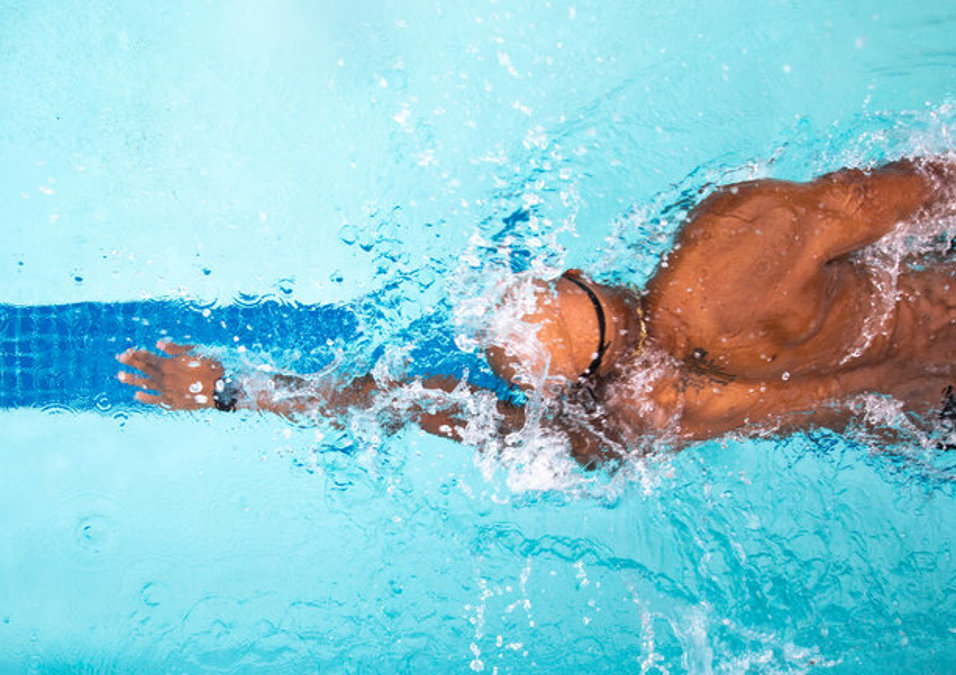Swimming: Ideal Summer Workout

SIGN UP FOR YOUR FREE DAY PASS TODAY!
When summer's heat hits, nothing beats a pool workout for breaking a sweat. However, for those more comfortable on land, pool exercises can seem daunting.
Swimmers train differently from most runners, walkers, and cyclists, favoring intervals over steady-state workouts.
They switch between different strokes, incorporate drills, and take short breaks, making swimming routines more diverse than typical running or cycling sessions.
Swimming is not only a fantastic way to stay active during the hot summer months, but it's also gentle on the joints and highly effective for cardiovascular health and upper-body strength.
While the legs do participate in swimming, particularly in breaststroke, they mainly act as stabilizers rather than primary drivers, resulting in toned arms and shoulders.
Elite swimmers typically cover 3,000 to 5,000 meters per practice, focusing on their specialized strokes and distances.
Sprinters (50 and 100 meters) do multiple short-distance repeats with ample rest, perfecting their technique to gain an edge in competition.
Conversely, distance swimmers log more mileage and refine an efficient stroke to stave off fatigue.
Though there's ongoing debate over which group endures tougher workouts, recreational swimmers often benefit most from combining sprint intervals with endurance training.
Whether to focus mainly on freestyle or mix in other strokes depends on personal goals.
Few swimmers excel in all four competitive strokes (freestyle, backstroke, breaststroke, and butterfly), tending to favor their strengths and avoid more challenging techniques.
Breaststroke and butterfly are the most demanding strokes, while freestyle and backstroke require less effort per stroke.
This often leads recreational swimmers to predominantly use freestyle. However, an effective workout isn't solely about covering the most distance in the least time.
A well-rounded swimmer masters all four strokes, so don't shy away from butterfly just because it's challenging.
Use one-arm drills (alternating arms every two or three strokes) or butterfly kick sets to build strength and improve technique.
Apply similar strategies to other unfamiliar strokes, using drills or kick sets as needed.
Ready to dive in? Make sure you have the right gear. Essential items include goggles (buy quality ones from a sports store) and a swim cap if your hair is long enough to obstruct your vision.
While a Speedo isn't necessary, opt for a form-fitting swimsuit without pockets to avoid drag.
Pack your pool bag with a towel and the workout plan below. For experienced swimmers, tackle the full 1,000 meters without breaks as a main set or standalone workout.
If you haven't swum in a while or can only manage a few lengths at a time, try the suggested workout variations according to your fitness level.
1,000 Meter Workout
Swim all 1,000 meters with or without rest periods, primarily using freestyle and mixing in other strokes as preferred. Push the pace during fast intervals and keep slow intervals relaxed.
- 200 meters warm up
- 25 meters fast / 25 meters slow
- 50 meters fast / 50 meters
- 75 meters fast / 25 meters slow
- 100 meters freestyle (or other stroke) drill
- 150 meters kick with or without a kickboard
- 200 meters moderate pace - mix in other strokes as desired
- 150 meters pull with a buoy and paddles (optional)
- 100 meters sprint / 50 meters recovery swim
- 50 meters easy cool down
Workout Variations:
Beginner:
- Reduce distance to 500 or 750 meters.
- Take longer rest periods between intervals.
Intermediate:
- Mix in more drills and kick sets for strength building.
Source: montrealgazette
The opinions shared in the GymNation blog articles are solely those of the respective authors and may not represent the perspectives of GymNation or any member of the GymNation team.
GET YOUR FREE TRIAL TODAY














































































